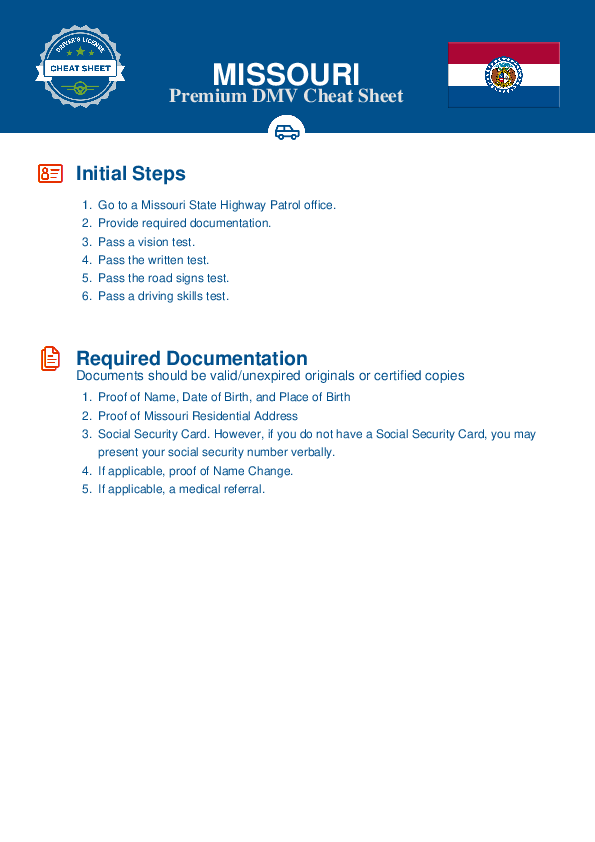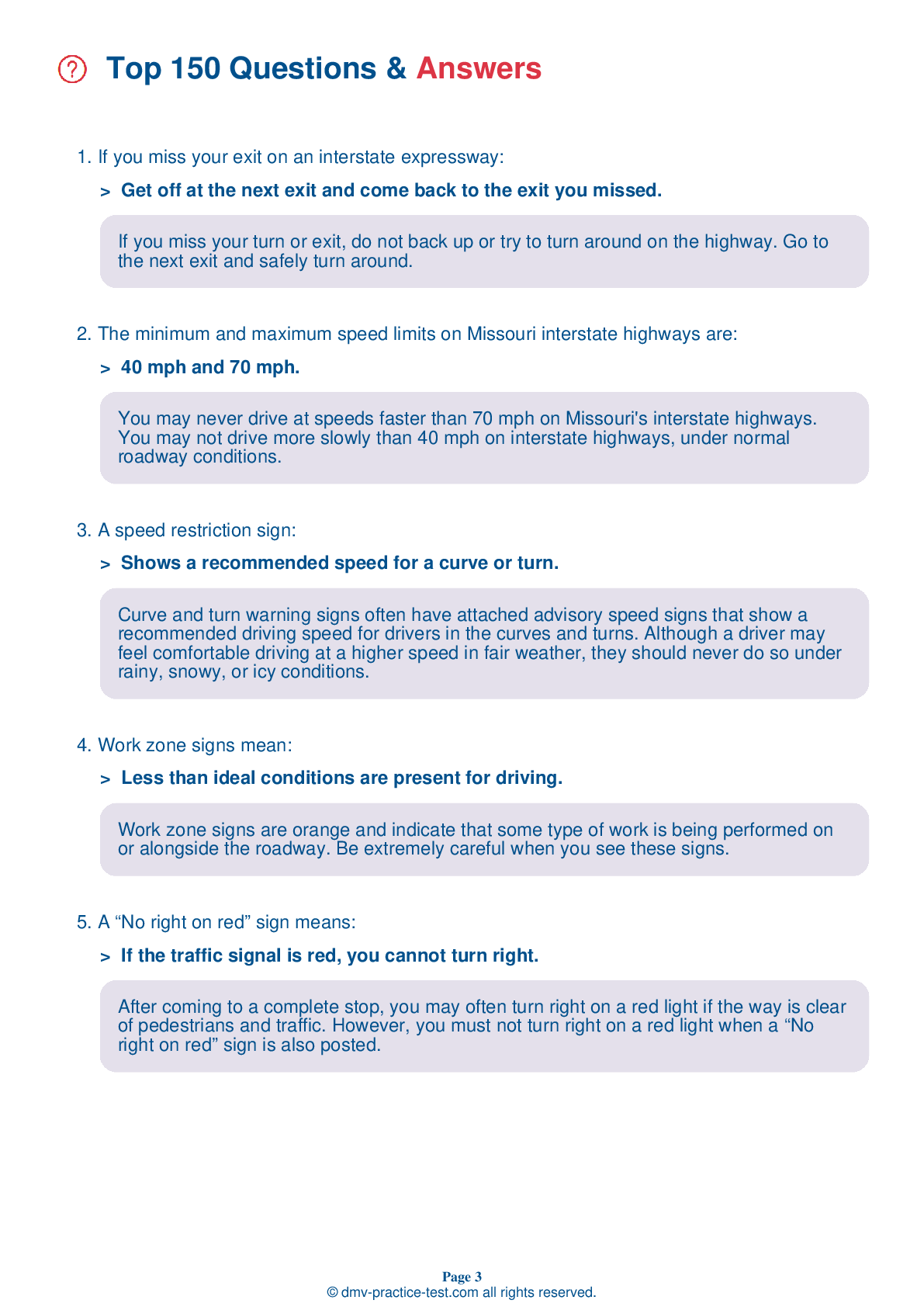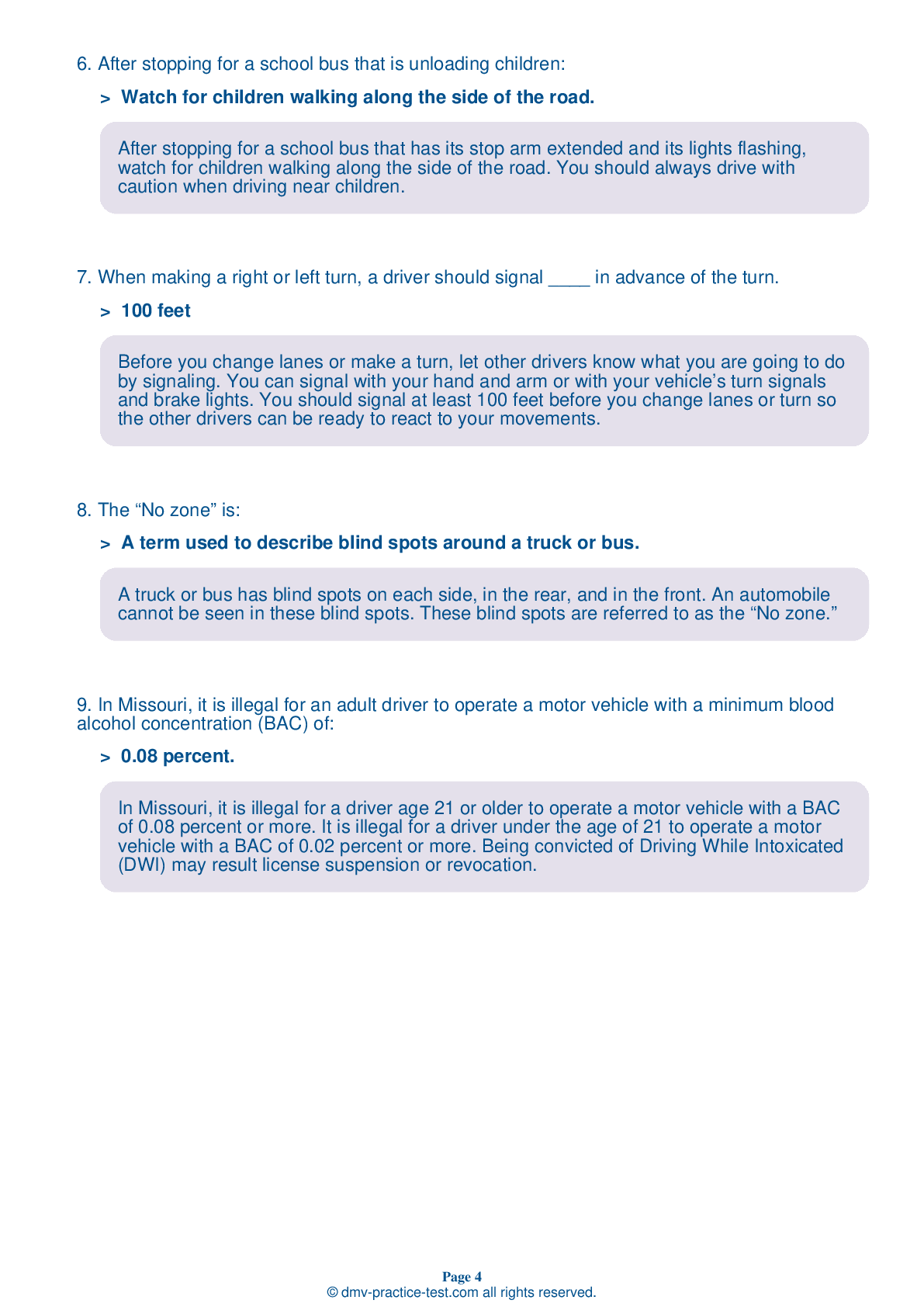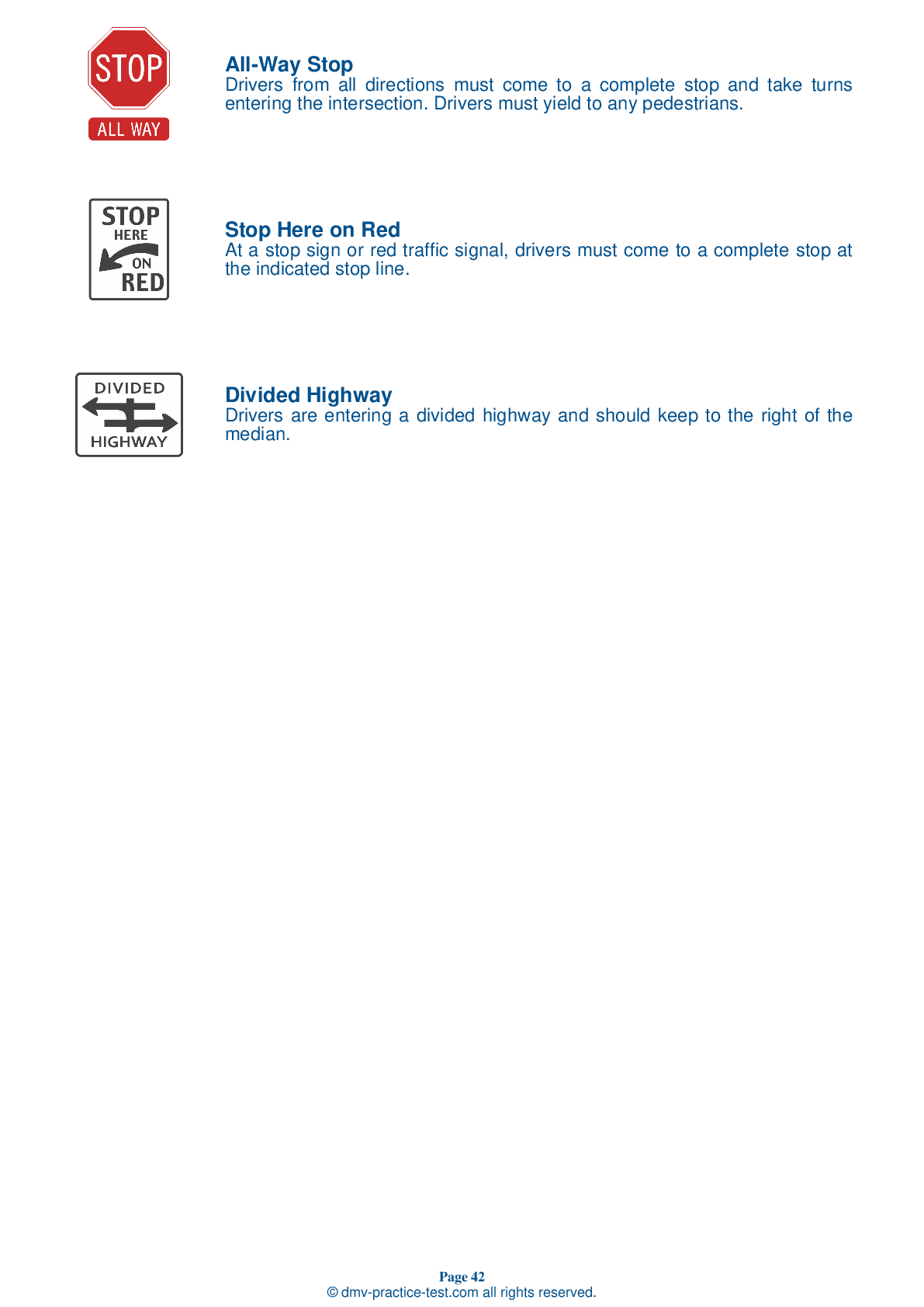FREE Missouri DMV Practice Test #20 Page 4 of 4
The Missouri DMV practise examinations have been updated for January 2025. It includes questions based on the Missouri Driver Handbook's most essential traffic signals and regulations for 2025. Use actual questions that are very similar (often identical!) to the DMV driving permit test and driver's licence exam to study for the DMV driving permit test and driver's licence exam.
On the practise exam, each question gets a tip and explanation to help you remember the concepts. The written component of the official Missouri DMV test will include questions about traffic rules, traffic signs, and driving statutes, as well as knowledge from the Driver Handbook.
To obtain a passing grade, you must correctly answer 20 of the 25 questions. To help you prepare for your instruction permit or driver's licence, take this Missouri DMV practise test.
The DMV exam is available in several languages.
Using any kind of testing assistance will result in an automatic fail, and the DMV may take additional action against your driver's licence, so stay away from it.
19 . To be safe when crossing a railroad, you should:
Railroad crossings are always dangerous. Drivers should look and listen for an approaching train coming from either direction before proceeding across the tracks. Watch for signals indicating an approaching train and never proceed until you are certain it is safe to do so.
20 . You are driving on a highway divided by two solid yellow lines. You may:
Double solid yellow lines are used to mark roadways where passing is prohibited from both directions. You may cross these lines only to make a left turn into or from an alley, private road, or driveway.
21 . When faced with an oncoming car to the left and a bicyclist to the right, you should:
When there is more than one potential hazard on the road, you should ensure that you only have to deal with one of them at a time. For example, when there is a bicyclist on the right that you want to pass and an oncoming car to the left, you should not try to squeeze between both at the same time. Instead, let the oncoming car pass, and then pass the bicyclist.
22 . When you hear the siren or see the flashing lights of an approaching emergency vehicle, you must:
Yield the right-of-way to any approaching emergency vehicle that is using its flashing lights or siren, regardless of its direction of travel. You must immediately drive to the right side of the road and stop until the emergency vehicle has passed. If you are within an intersection, pass through the intersection before coming to a stop on the right side of the road.
23 . You may drive around the gates at a railroad crossing:
You are required to stop at all railroad crossings when signals warn of an approaching train. These signals may include flashing red lights, a lowered crossing gate, a flagger signaling, or a train’s audible signal of warning. Do not attempt to go around a lowered gate.
24 . You must not drive your vehicle at a speed greater than:
You must not drive at a speed that is faster than is reasonable and prudent. You must drive at a speed that is appropriate for the area where you are driving, the type and condition of surrounding traffic, the presence of pedestrians, the weather, the quality of the road, and light conditions. You must drive within legal speed limits.
25 . This road sign means:
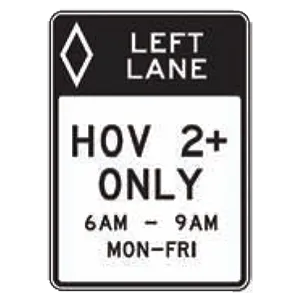
This sign marks a high occupancy vehicle (HOV) lane. HOV lanes are reserved for use by buses and vehicles with a driver and one or more passengers, as indicated on the sign.
See the exact questions that will be on the 2025 Missouri DMV exam.
99.2% of people who use the cheat sheet pass the FIRST TIME
LT gives us an insight on how the cheat sheet provided her with all the study questions she needed before taking her test.
Joe initially studied with the handbook and failed his test, he eventually found us online, studied and pass his test the first time around.
